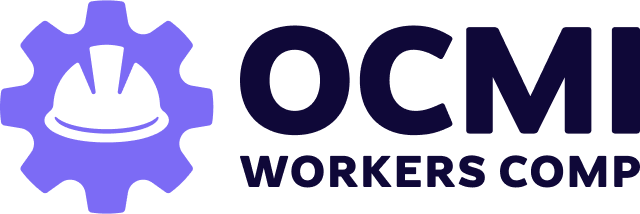Wyoming’s diverse business environment, from energy sector operations in Casper to tourism enterprises in Jackson Hole, creates varied liability exposures that can threaten business financial stability. While Wyoming state law does not mandate general liability insurance for most businesses, this coverage provides essential protection against third-party claims that could otherwise result in significant financial losses.
Who Needs General Liability Coverage in Wyoming
General liability insurance is not required by Wyoming state law for most business operations. However, specific circumstances and professional requirements make coverage necessary or highly recommended:
Professional License Requirements:
- Real Estate Professionals: Wyoming state law requires real estate agents and brokers to carry errors and omissions insurance as a licensing requirement
- Medical Professionals: State law requires minimum professional liability insurance coverage for physicians participating in state programs that limit malpractice damage awards
- Licensed Contractors: While requirements vary by municipality, many local jurisdictions require general contractors to carry liability insurance as part of licensing requirements
Municipal and Local Requirements:
- Contractor Licensing: General contractors typically must carry liability insurance with limits ranging from $500,000 to $1 million, depending on local jurisdiction requirements
- Surety Bond Requirements: Contractors may need surety bonds ranging from $1,000 to $10,000 or more, depending on project size and local regulations
- Workers’ Compensation: Mandatory for contractors with employees
Commercial and Business Requirements:
- Commercial Leases: Most commercial property leases require tenants to maintain general liability insurance before occupancy
- Government Contracts: Public sector contracts typically mandate specific general liability coverage limits
- Client Contracts: Many businesses require proof of general liability insurance from vendors and service providers
Industry-Specific Considerations: Businesses should consult with local licensing authorities to determine specific insurance requirements for their industry or profession within their operating jurisdiction.
Key Benefits and Coverage Details
General liability insurance provides comprehensive protection through several essential coverage areas:
Bodily Injury Protection Covers medical expenses, lost wages, and legal costs when third parties suffer physical injuries on business premises or due to business operations. This includes customer injuries in retail establishments, visitor injuries at business facilities, or individuals harmed by business products or services.
Property Damage Coverage Protects against claims when business operations cause damage to another party’s property. Examples include contractors damaging client property during construction, service providers breaking customer equipment, or delivery operations causing property damage.
Personal and Advertising Injury Provides coverage for claims involving libel, slander, copyright infringement, invasion of privacy, wrongful eviction, and false arrest. This protection is crucial for businesses engaged in advertising, marketing, or public communications.
Legal Defense and Court Costs Covers attorney fees, court costs, and legal expenses regardless of claim merit. This coverage protects businesses from expensive legal defense costs that can exceed actual damage awards.
Medical Payments Coverage Offers immediate payment for minor medical expenses when someone is injured on business property, regardless of fault determination. This coverage helps maintain positive customer relationships and can prevent minor incidents from escalating.
Products and Completed Operations Protects against claims arising from products sold or work completed after the business has finished the project or delivered the product to customers.
Common Claims and Real-World Wyoming Risks
Wyoming businesses encounter specific liability exposures based on the state’s economic profile and operating conditions:
Energy Sector and Industrial Claims Wyoming’s significant energy industry faces liability from industrial accidents involving third parties, property damage during extraction or processing operations, and environmental concerns. Claims often involve premises liability at industrial facilities and contractor-related incidents.
Tourism and Hospitality Exposures Wyoming’s tourism industry encounters liability from visitor injuries at recreational facilities, premises liability at hotels and restaurants, and activity-related incidents. Seasonal weather conditions and outdoor recreational activities create unique exposure scenarios.
Construction and Development Risks Construction businesses face frequent claims for jobsite injuries to third parties, property damage during construction activities, and completed operations liability. Wyoming’s weather conditions and rural construction projects create additional risk factors.
Agriculture and Ranch Operations Agricultural businesses face liability from visitor injuries involving equipment or livestock, property damage during agricultural services, and agritourism-related incidents. Large ranch operations encounter particular exposure from recreational activities and public access.
Retail and Commercial Property Risks Slip-and-fall incidents represent common general liability claims for Wyoming retail businesses. Seasonal weather conditions, including snow and ice, create additional premises liability challenges for businesses maintaining customer access areas.
Transportation and Logistics Claims Wyoming’s position along major transportation corridors creates liability exposures for logistics companies, including third-party property damage and premises liability at distribution and storage facilities.
Businesses often confuse general liability and workers’ comp. This guide on general liability vs. workers’ compensation explains the key differences and how both coverages work together to protect your company.
Cost Factors for Wyoming General Liability Insurance
Multiple factors influence general liability insurance costs for Wyoming businesses:
Industry Classification and Risk Assessment Insurance companies evaluate businesses using Standard Industrial Classification codes or proprietary classification systems. Higher-risk industries like construction and energy typically face elevated premiums compared to office-based operations.
Business Size and Revenue Metrics Premium calculations commonly use gross revenue, payroll amounts, or facility square footage as base rating factors. Insurance rates typically develop per thousand dollars of exposure using these operational metrics.
Geographic Location Impact Business location within Wyoming affects premium costs, with urban areas like Cheyenne and Casper potentially experiencing different rates than rural locations due to varying claim frequencies and access to legal services.
Claims History and Experience Rating Businesses with previous liability claims face higher premiums due to demonstrated risk exposure. New businesses without established experience may encounter elevated initial rates until developing favorable claims histories.
Coverage Limits and Policy Features Higher coverage limits increase premium costs, while policy enhancements like additional insured endorsements and expanded coverage options affect overall pricing. Deductible selection also impacts premium calculations.
Risk Management and Safety Programs Documented safety programs, employee training initiatives, and proactive risk management practices can positively influence premium rates and demonstrate commitment to loss prevention.
Claims Process and Legal Requirements in Wyoming
Understanding Wyoming’s legal framework helps businesses effectively navigate liability claims:
Wyoming Tort Law System Wyoming follows comparative negligence principles where damage awards are reduced by the plaintiff’s percentage of fault. Specific fault percentage thresholds determine recovery eligibility under state law.
Statute of Limitations Personal injury claims must generally be filed within four years of the incident date. Property damage claims typically have a four-year limitation period, though specific circumstances can affect these timeframes.
Damage Award Considerations Wyoming’s damage award structure and any applicable caps depend on specific case circumstances and the nature of the claims involved.
Claims Notification Process Immediate notification to insurance carriers following incidents ensures coverage and enables prompt investigation. Detailed documentation of incident circumstances, witness information, and immediate response actions supports effective claims handling.
Legal Defense Coordination Insurance companies typically assign defense attorneys experienced in Wyoming law and familiar with local court practices. Businesses should maintain open communication with assigned counsel and insurance representatives throughout the claims process.
Settlement Evaluation Factors Insurance companies consider Wyoming’s comparative negligence standards, local jury tendencies, and specific case circumstances when evaluating settlement opportunities versus litigation strategies.
Expert Recommendations for Wyoming Businesses
Appropriate Coverage Limits Most Wyoming businesses should consider minimum limits of $1 million per occurrence and $2 million aggregate coverage. Higher-risk operations may require $2 million per occurrence limits or additional umbrella coverage for enhanced protection.
Essential Policy Components Ensure policies include comprehensive legal defense cost coverage, personal and advertising injury protection, and medical payments benefits. Verify coverage extends to all business locations and operational activities within Wyoming.
Proactive Risk Management Implement documented safety protocols, maintain premises in excellent condition, and provide comprehensive employee training on customer safety procedures. Regular safety assessments demonstrate commitment to loss prevention and can positively influence insurance rates.
Regular Policy Reviews Conduct annual coverage reviews or assessments when business operations change significantly. Revenue growth, new locations, expanded services, or operational modifications may require coverage adjustments to maintain adequate protection levels.
Professional Insurance Guidance Collaborate with licensed insurance professionals familiar with Wyoming business requirements and industry-specific exposures. Local agents understand state-specific risks and provide valuable guidance on appropriate coverage selection and risk management strategies.
Comprehensive Coverage Coordination Integrate general liability insurance with workers’ compensation, commercial auto, professional liability, and property insurance to ensure complete protection without coverage gaps or overlapping exposures.
Local Compliance Considerations Ensure coverage meets all applicable local licensing requirements and municipal regulations that may apply to specific business operations or geographic areas within Wyoming.
Bottom Line for Wyoming Business Owners
General liability insurance provides fundamental financial protection for Wyoming businesses operating across the state’s diverse economic sectors. While not mandated by state law for most businesses, the protection it offers against third-party liability claims makes it essential coverage for prudent business operations.
Call our licensed agents today at 855-718-7552





